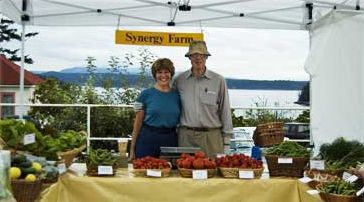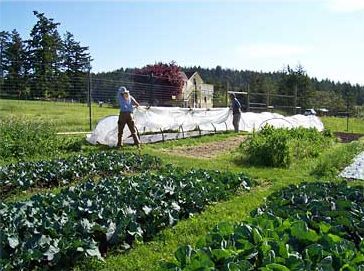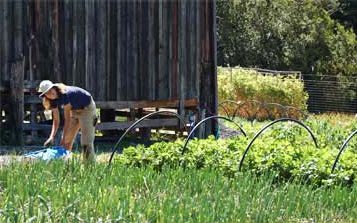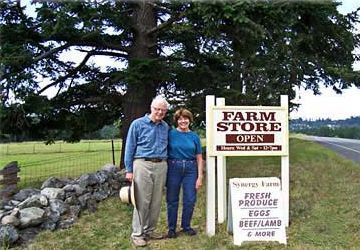Organic farming and dining in the San Juan Islands
Edit page New page Hide edit links
Last month we were excited to announce the arrival of spring. We delighted in the first of the early greens from our local farms.
Now we are patiently awaiting the spring crops to reach maturity for harvest. We are featuring local leeks, braising greens and spring salad mix, cauliflower, sorrell, parsley, baby fennel, mint, pansies, and mustard in our dishes at Coho.
One of the farms that supplies Coho is Synergy Farm. Susan and Peter Corning, the owners of Synergy Farm, practice biointensive farming - a technique that dates back more than 4,000 years to ancient China. Their low-impact farm helps protect the island's precious ecosystem and healthy quality of life, while providing nutritious food for the San Juan Islands.
Synergy Farm's biointensive system relies on a number of techniques to produce yields that can average four times higher (per acre) than commercial-industrial agriculture while improving the quantity and quality of the soil, and minimizing the consumption of energy and water.
These are the main components of their farming practice:
1. Double-dug raised beds that have been "double-dug" down to 24 inches. This allows for very close spacing of plants and very deep root structures.
2. Composting, which replenishes nutrients that crops take out of the topsoil. Susan and Peter maintain the equivalent of more than 30 compost piles.
3. Intensive planting. Seeds are propagated in flats and transplanted quite close together so that the leaves of the mature plants touch one another. This creates an umbrella - a "micro-climate" -- over the bed which reduces water evaporation, retards the growth of weeds, retains the carbon dioxide that the plants need for growth and protects the micro-biota living in the soil.
4. Synergistic planting of crop combinations so that plants that are grown together enhance each other.
5. Carbon-efficient crops. Some 50-60% of all the crops grown on a modern biointensive farm are dual-purpose crops that provide both calories for humans and an abundance of material for building compost piles.
6. Mobile greenhouses. Susan and Peter have nine mobile greenhouses that rotate between summer and winter beds. During the winter months, the mobile greenhouses (some heated) grow lettuce and other salad crops that would otherwise not survive our Northwest winters. In the summer, the greenhouses cover tomatoes, cucumbers, peppers, eggplants, and other heat-loving crops. By rotating the greenhouses on alternate beds, they prevent the soil from accumulating mold.
7. Rainwater catchment. The Cornings have enlarged the farm pond and installed a rainwater catchment system and solar powered irrigation that provides filtered water for the gardens.
8. Pastured poultry. Synergy Farm's laying hens are pasture-raised and organically fed, and the meat chickens are also pasture-raised in mobile "hoop coops" that are moved daily to fresh ground.
We look forward to other sharing news about food and wines from the Islands with you and look forward to the pleasure of hosting for dinner.



